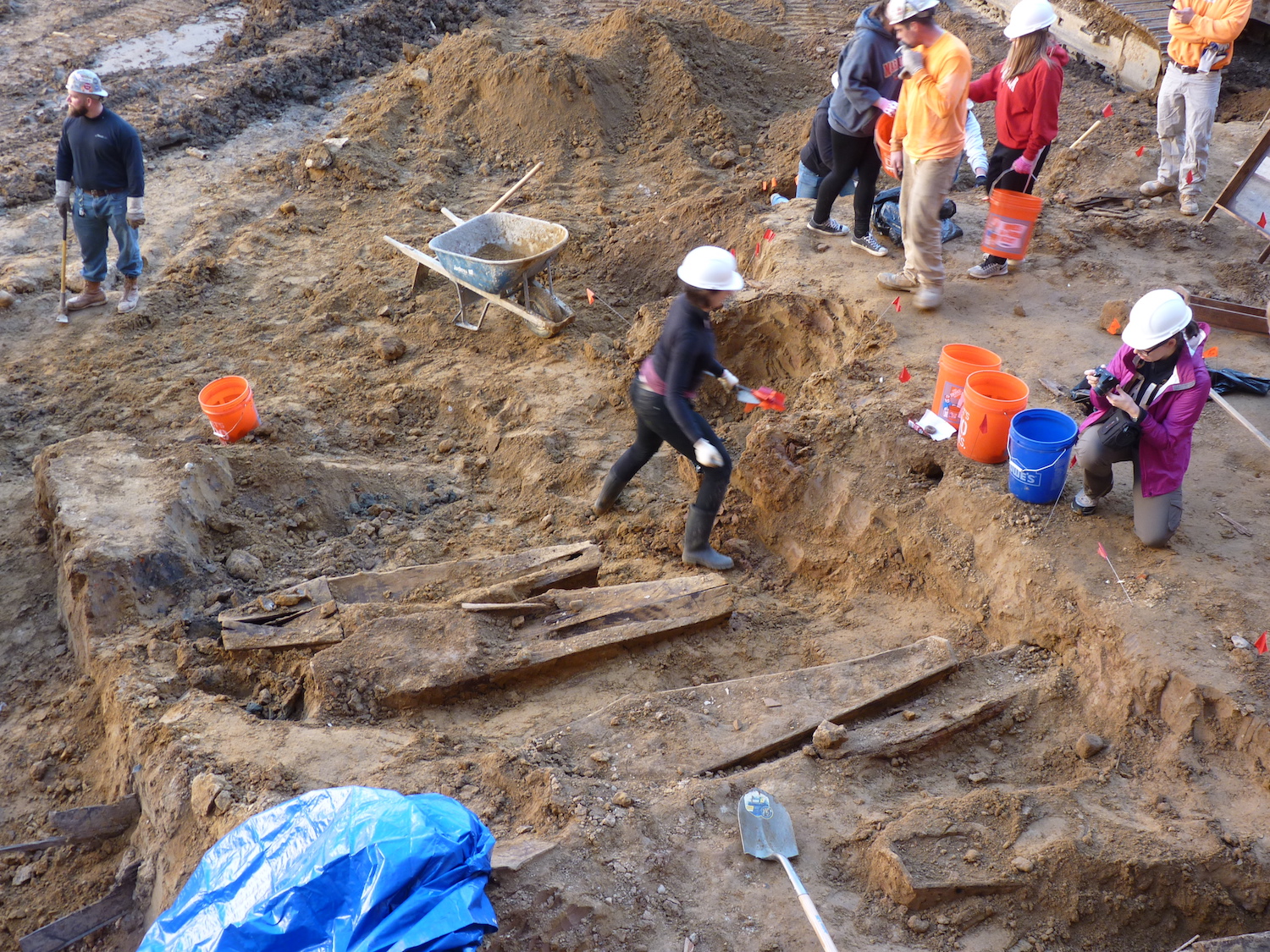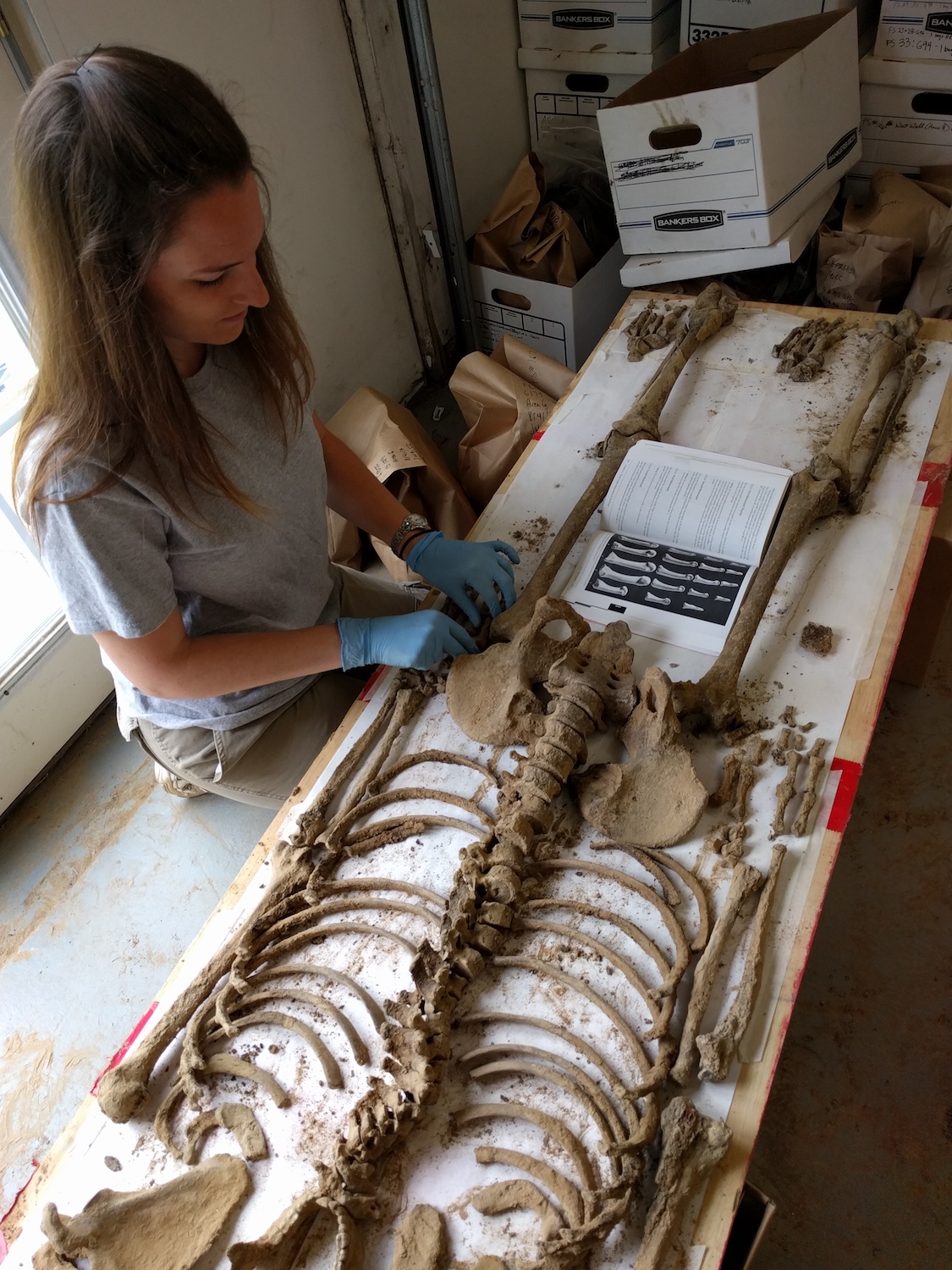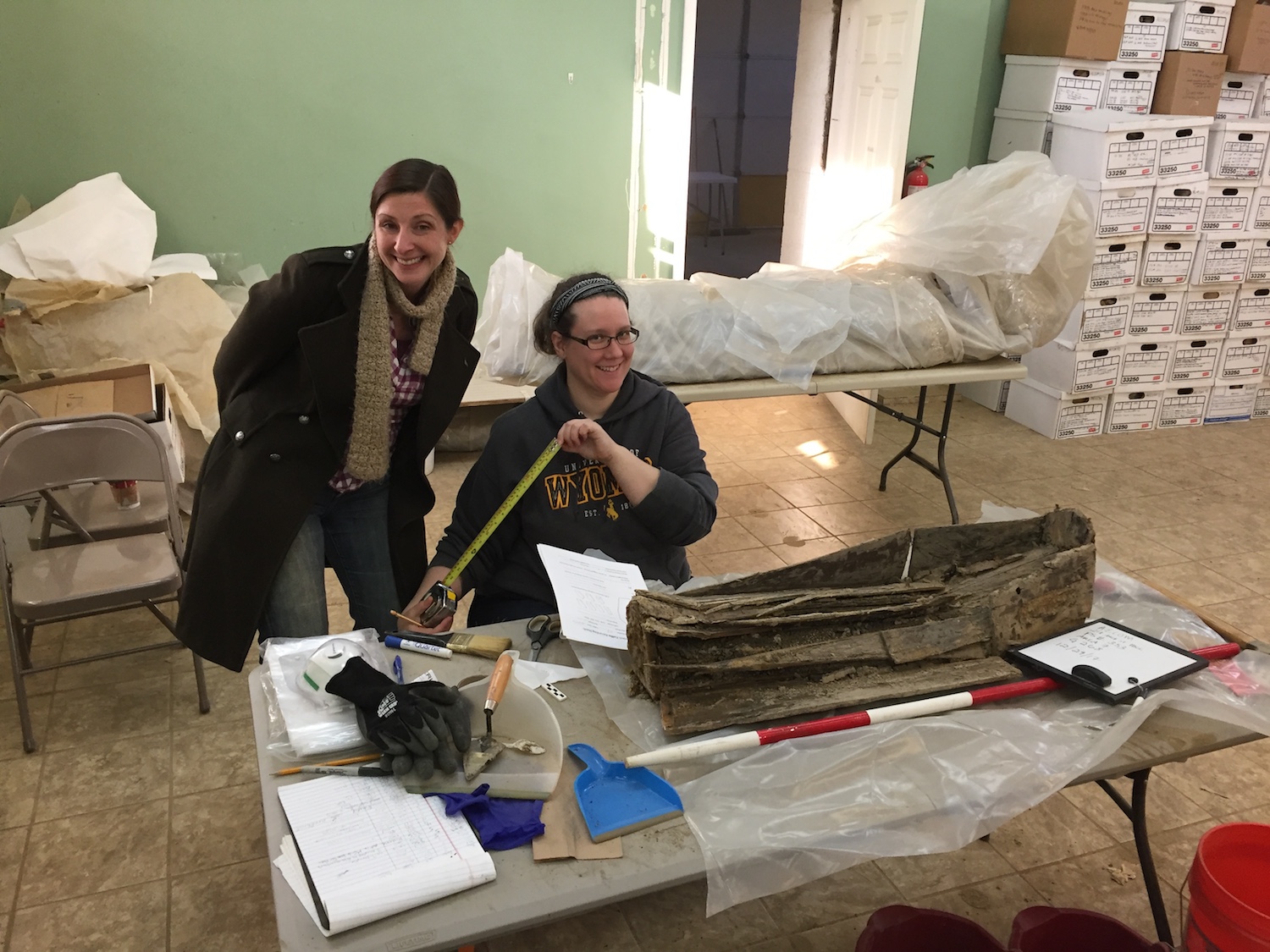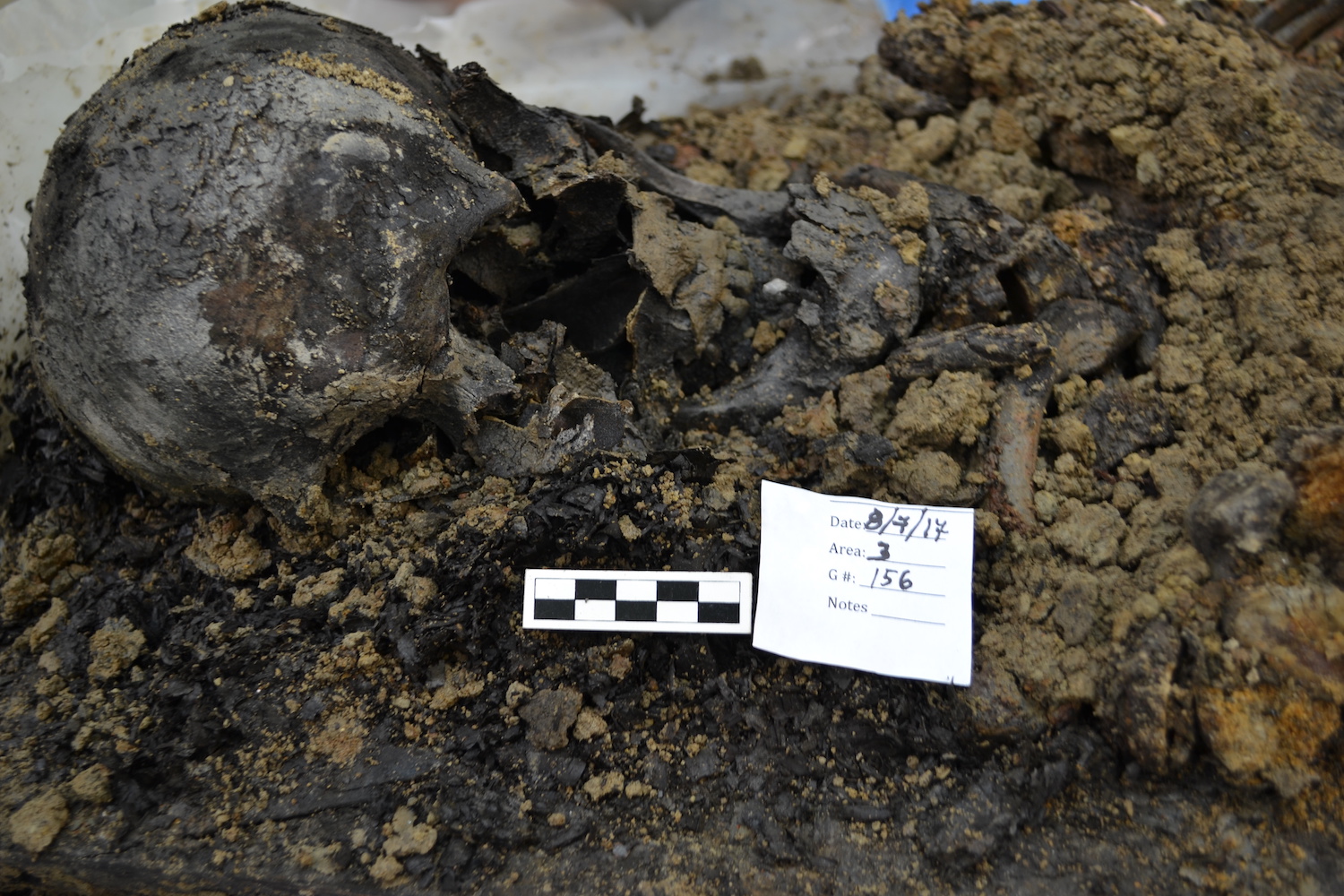Colonial Cemetery Accidentally Unearthed in Philadelphia, and Researchers Race to Analyze the Bones
Alarmed, an anonymous caller alerted the Medical Examiner's office, which halted the digging and looked at the bones. But these bones weren't from the recently departed, the examiner found. They were historic — some dating to the 1700s — and from the First Baptist Church burial ground, one of Philadelphia's first cemeteries.
Despite its colonial history, Philadelphia has no overarching laws regulating such finds, especially those on private land, according to forensics scientist Kimberlee Moran, who read about the discovery in the Philadelphia Inquirer in 2016. [See photos of the Cemetery Excavation in Philadelphia]
With no governing laws, the bones were getting damaged, with some haphazardly collected once the construction restarted.
Moran, an associate teaching professor and director of forensics at Rutgers University-Camden in New Jersey, had spent nine years working as a forensic scientist in the United Kingdom. There, construction workers commonly find historic human remains. After reading about the discovery, "I was like, 'Oh, I want some bones! I'll do a little project, I'll maybe connect a couple students to it and everyone will be happy,'" Moran told Live Science.
Little did she know the enormous undertaking that awaited her.

Digging for bones
Thousands of people were buried at the First Baptist Church's burial ground from about 1702 until 1860, when the cemetery was allegedly relocated. However, when the church moved its cemetery because it was turning into a local garbage dump, the Philadelphia Board of Health gave it only three months that year — from Jan. 1 to April 1 — to move the graves.
This was a tremendous undertaking, and although some of the graves were relocated, the majority were not, Moran said. The fact that the church left behind so many bodies wasn't publicized, and it wasn't until 2017 that the extent of the burials was realized, she said.
Sign up for the Live Science daily newsletter now
Get the world’s most fascinating discoveries delivered straight to your inbox.
In all, the remains of at least 3,000 people were still buried there, according to historical records. Moran and her colleagues have since found about 500 of them where the luxury condominium now sits, at 218 Arch Street.
After visiting the site with Anna Dhody, a forensic anthropologist at the Mütter Museum of Philadelphia, Moran was given a box holding 113 bones, mostly long bones from people's arms and legs. Dhody and Moran offered to help excavate or oversee the project, but they were politely brushed aside, Moran said.

But six weeks later, in February 2017, the developer, PMC Property Group, had a change of heart. Construction workers continued to find bones, and they didn't know what to do with them. "We came back to the site, and we found very obvious voids in the soil that had wood sticking out of them," Moran said. "It was obvious that this was a coffin that had been disturbed by the heavy machinery. And someone's legs were sticking out."
So, Moran, Dhody and Ani Hatza, a forensic anthropologist at Temple University in Philadelphia, struck a deal with the developer. The scientists would supervise the backhoe work, and if they saw any bones, the backhoe would stop so the scientists could excavate the spot. "It was pretty rough and ready," Moran said. "They didn't let us do a meticulous job or anything."
It wasn't ideal, but it was better than nothing, Moran said. "For the next two weeks, the three of us just rearranged our lives to try to make sure that somebody was there every single day." [Photos: Time Capsule from 1795 Reveals Pieces of American History]
At that time, the scientists still didn't realize the cemetery's immense size. That changed when construction workers came across an even denser part of the cemetery. "Eventually, we got to a point where there were multiple burials stacked on top of each other," Moran said. Dhody put her foot down; the scientists needed to do this properly, she told the developer.
Finally, PMC Property Group agreed to give the scientists one week in that particular area to excavate the graves. The women immediately got to work, recruiting students, colleagues and volunteers — anyone who could help excavate the cemetery and follow archaeological standards, which included mapping the graves, taking photos and sketches and treating the bones with respect.
Within a few days, despite people signing nondisclosure agreements, the media got wind of the dig. But this allowed Moran to talk freely about the excavation, raise awareness and share the history with Philadelphians. And, eventually, the city pressured the developer to hire an engineering firm to excavate the site, she said.
What they found
Despite the number of bodies, scientists have figured out the names for just three by looking at headstones, bones and historical records. These are Benjamin Britton, a baker and slave owner who died in 1782 at age 78; Israel Morris; and 3-year-old Sarah Rogers, according to The New York Times.
Most of the wooden coffins are simple, although many have unique handles, which help date many of the burials to the 1720s to 1790s, Moran said. One coffin even had handles made by a local cabinet maker, who likely made the coffin, too, she said. These coffins held few artifacts — although some had grave goods, such as a pair of scissors, a comb, fake gold rings, broken pottery and fragments of fabric.

Jared Beatrice, an assistant professor of anthropology at The College of New Jersey, is leading the effort to assess each body for its sex, age at death, stature, ancestry and any signs of trauma or disease. It's clear that nutritional deficiencies were widespread. Already, the scientists have found evidence for yellow fever, chlamydia, tuberculosis and leprosy, Moran said. (The scientists wear protective gear, so they're not in danger of catching these diseases.) [Tiny & Nasty: Images of Things That Make Us Sick]
Researchers are also looking at dental plaque on the remaining teeth, which can reveal what the people ate and where they originated. Moreover, they're analyzing the bacteria, or the microbiome, in the pelvic cavities (where the organs used to sit), and have even discovered a few mummified brains. A lipid (fat) analysis of these brains may help scientists determine the year in which these people died, Moran said.
In addition, 15 of the dead may be of African descent, according to burial records, the researchers said. But they have yet to actually find these people's remains, Moran noted.

As the research continues, Moran and her colleagues keep in touch with the First Baptist Church, which still exists, albeit with a smaller congregation. And they have to work fast; the researchers have until only 2023 to study the bodies, which then have to be respectfully reburied in Mount Moriah Cemetery, where the cemetery relocated to in 1860, according to Philadelphia's Orphans' Court, which manages unmarked graves and cemeteries.
In the meantime, the scientists plan to present some of their findings at the annual meeting of the Society for American Archaeology next week, and apply for grants so they can fund their research on this pivotal find.
"You think a skeleton is just a skeleton, but the more that we study each individual, that's really what they're proving to be; they're all individuals," Moran said. "And we're seeing evidence of that life from what's been left behind."
- Photos: Colonial-Age Shipwrecks Found Off Cape Canaveral Coast
- Photos: Decapitated Romans Found in Ancient Cemetery
- In Photos: 'Demon Burials' Discovered in Poland Cemetery
Originally published on Live Science.

Laura is the archaeology and Life's Little Mysteries editor at Live Science. She also reports on general science, including paleontology. Her work has appeared in The New York Times, Scholastic, Popular Science and Spectrum, a site on autism research. She has won multiple awards from the Society of Professional Journalists and the Washington Newspaper Publishers Association for her reporting at a weekly newspaper near Seattle. Laura holds a bachelor's degree in English literature and psychology from Washington University in St. Louis and a master's degree in science writing from NYU.









